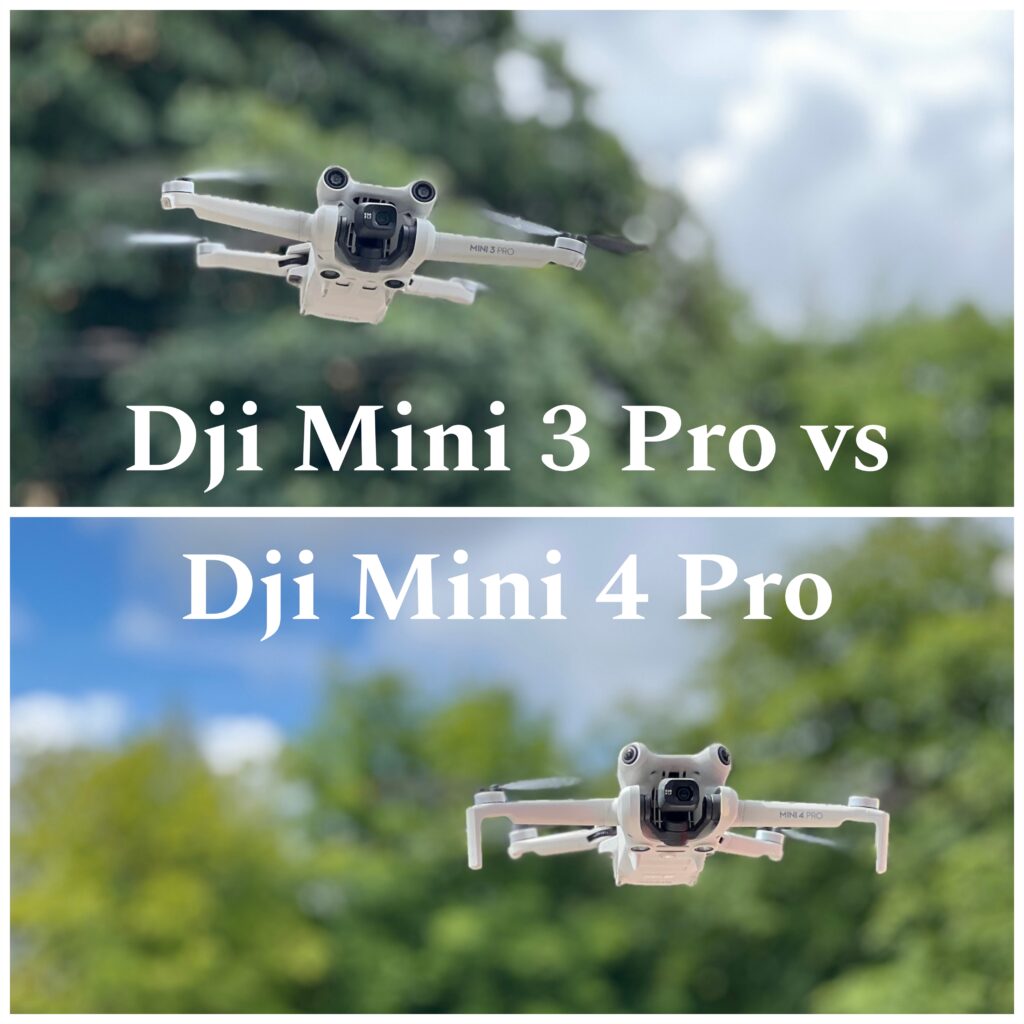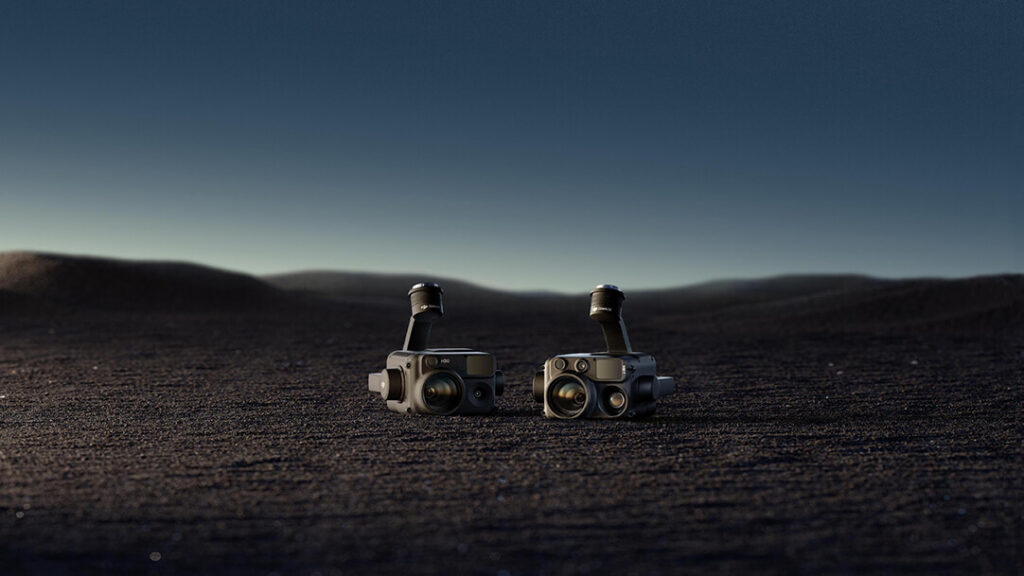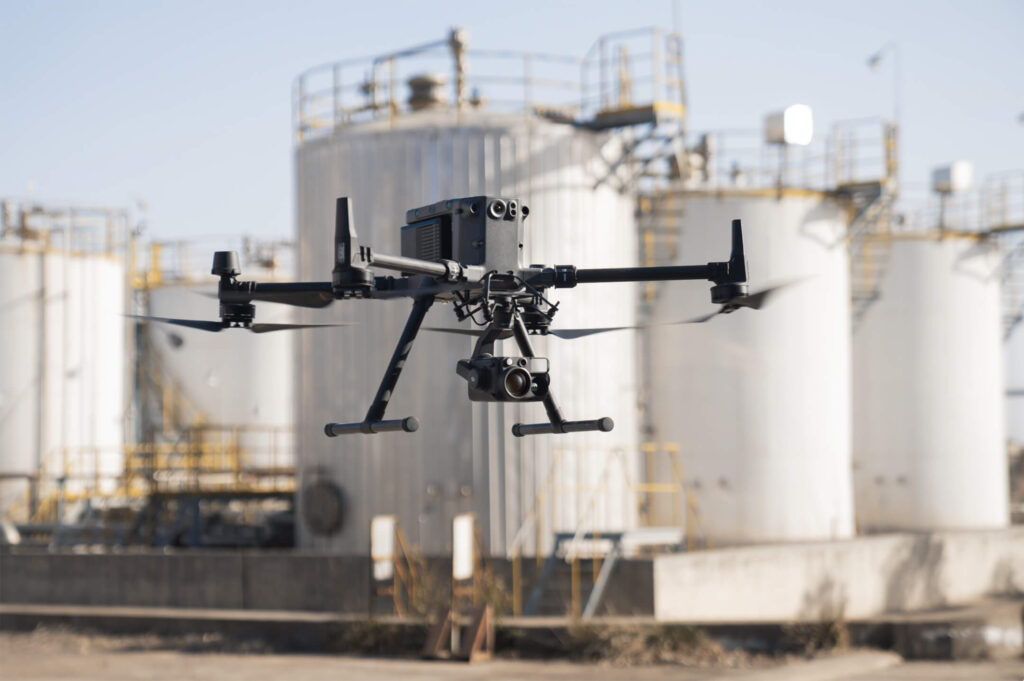 DJI Mini 4 Pro vs DJI Mini 3 Pro: Which to Choose?
DJI Mini 4 Pro vs DJI Mini 3 Pro: Which to Choose?
DJI Mini 4 Pro vs DJI Mini 3 Pro: Which to Choose?
This time, the DJI Mini 4 Pro and DJI Mini 3 Pro are up against each other. Although at first glance these sub-249-gram mini-drones seem quite similar, there are several important differences in their technical specifications. Which is the better choice? Does it boil down to just the price?
Design and Specifications
The design of the DJI Mini 4 Pro and DJI Mini 3 Pro is generally very similar, but with some key differences. The Mini 4 Pro has landing legs, which are absent on the Mini 3 Pro. This makes the Mini 4 Pro more stable, while the Mini 3 Pro is always slightly tilted since it only rests on its belly. This difference becomes apparent when landing on uneven surfaces.
Both drones weigh 249 grams. The dimensions of the DJI Mini 4 Pro when folded are 148 × 94 × 64mm and unfolded are 298 × 373 × 101 mm. The Mini 3 Pro is slightly smaller when folded – 145 × 90 × 62mm and unfolded 251 × 362 × 70mm. Maximum speed and flight time are equal for both models – 57.6 kilometers per hour and 34 minutes respectively.
Camera and Functionality
Both drones are equipped with a 1/1.3-inch CMOS sensor, but the Mini 4 Pro offers greater dynamic range and better night shooting capabilities thanks to its 10-bit color encoding and more diverse color modes. The Mini 4 Pro can record in 4K resolution up to 100 frames per second, while the Mini 3 Pro is limited to 60 frames per second.
Resolution and Frame Rate
The DJI Mini 3 Pro allows you to shoot in 1080p up to 120 frames per second (FPS). This means you can slow down your footage to one-fifth of its original speed while maintaining high-resolution quality.
With the DJI Mini 4 Pro, you can film in 4K up to 100 frames per second (FPS). This ensures even greater detail, for example, in slow-motion shots. The ability to film in 4K at a high frame rate offers more flexibility in post-processing, allowing exceptionally smooth and sharp slow-motion effects.
ActiveTrack
DJI Mini 3 Pro is equipped with ActiveTrack 4.0, which offers three tracking modes:
- ActiveTrack: This mode allows the drone to autonomously follow moving objects, keeping them in frame even as their speed and direction change. This is ideal for capturing dynamic action scenes.
- Spotlight: In this mode, the user can lock the drone onto an object while the drone flies independently, keeping the object in focus regardless of the drone’s movement. This is great for tracking shots.
- Point of Interest: In this mode, the user can select an object or subject around which the drone will circle, capturing compelling circular shots.
DJI Mini 4 Pro introduces a new feature, ActiveTrack 360°, which is an enhanced version of the previous ActiveTrack 4.0. With ActiveTrack 360°, the drone can follow objects and simultaneously avoid obstacles in all directions.
This is ideal for shooting in complex environments. Although both drones offer ActiveTrack modes, the DJI Mini 4 Pro takes tracking to a new level with ActiveTrack 360°, allowing the drone to follow objects from any direction. If you need enhanced tracking capabilities in your aerial shots, the Mini 4 Pro is an excellent choice.
Comparison Table
| Feature |
DJI Mini 4 Pro |
DJI Mini 3 Pro |
| Takeoff Weight |
< 249 g |
< 249 g |
| Dimensions |
Folded: 148×90×62 mm
Unfolded: 251×362×72 mm |
Folded: 148×90×62 mm
Unfolded: 251×362×72 mm |
| Max Flight Time |
34 minutes |
34 minutes |
| Max Wind Resistance |
10.7 m/s (Level 5) |
10.7 m/s (Level 5) |
| Global Satellite Navigation System |
GPS + Galileo + BeiDou |
GPS + Galileo + BeiDou |
| Image Sensor |
1/1.3-inch CMOS, 48 MP effective pixels |
1/1.3-inch CMOS, 48 MP effective pixels |
| Max Photo Resolution |
8064×6048 (48 MP) |
8064×6048 (48 MP) |
| Max Video Resolution |
4K @ 100fps + FHD |
4K @ 60fps + FHD |
| Obstacle Avoidance System |
Omnidirectional obstacle detection |
Front, rear, and bottom vision sensors |
| Video Transmission Protocol |
DJI O4 |
DJI O3 |
| Advanced Features |
ActiveTrack 5.0, MasterShots, Advanced Return to Home |
ActiveTrack 4.0, MasterShots |
| Maximum Speed |
57.6 km/h |
57.6 km/h |
| Internal Memory (both support Micro-SD) |
2GB |
1.2GB |
| Color Modes |
Normal, HLG/D-Log M 10-bit |
Normal/D-Cinelike |
| Real-time View Quality |
1080p/60fps |
1080p/30fps |
| Max Transmission Distance |
10 km |
8 km |
| Remote Control |
DJI RC-N2 |
DJI RC-N1 |
How to Choose?
First, figure out your expectations and needs, and based on that, which model suits you best. Then choose the controller and decide whether one battery is sufficient or if a kit with multiple batteries and various accessories would be suitable. This way, you will find the perfect drone kit that is likely to serve you for years.
Price is often the main factor influencing the choice of product. If the budget does not allow even a small additional expense, the choice is clear. Consider also drone class labels and weight, but the drones in this post both weigh 249 grams, which means both can be flown equally without most regulatory requirements. However, if it is possible to stretch the budget, the DJI Mini 4 Pro might prove to be a
better choice – the Mini 4 Pro is a step ahead of its predecessor and offers some enhancements such as a better obstacle detection system. The cheapest Mini 4 Pro kit costs €799 and is mostly sold out; the cheapest Mini 3 Pro kit costs €659. If you are still unsure between the two, feel free to ask for advice from our store…
Share the post on social media






